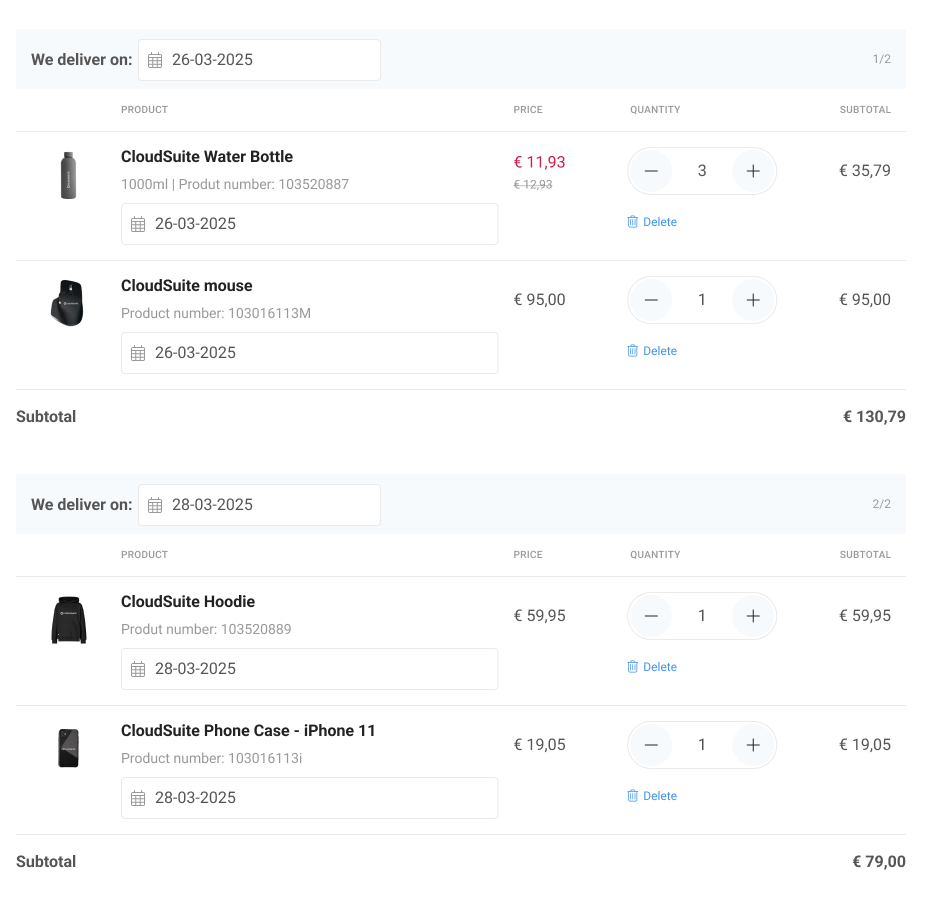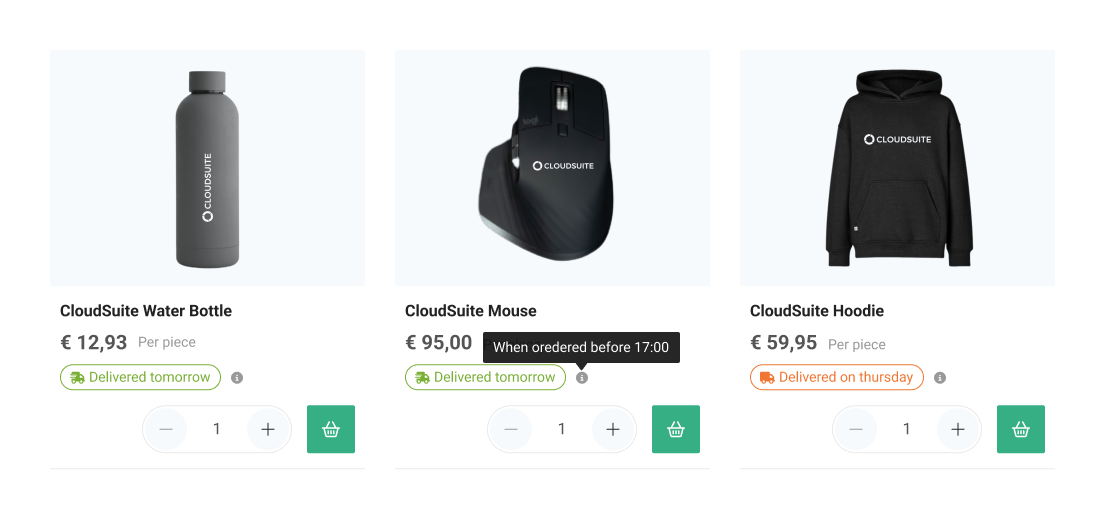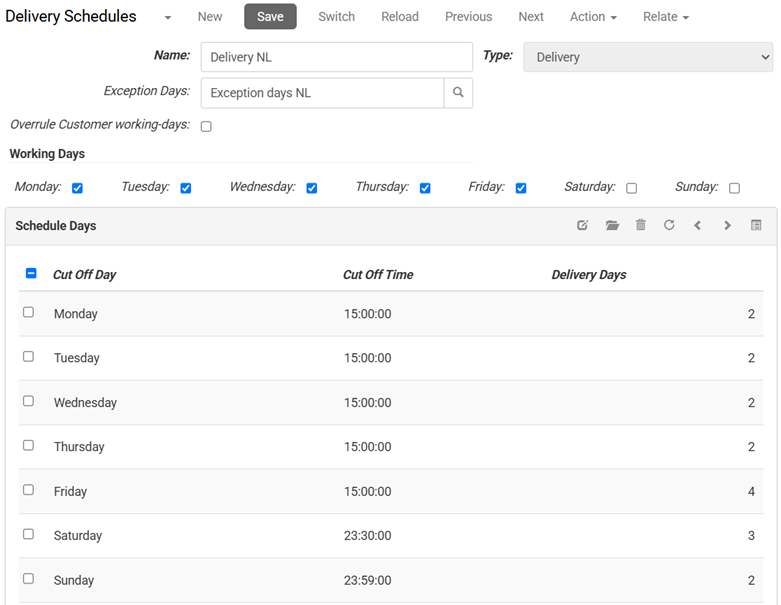Product Logistics
In Product Logistics, it is important to list the ordered products correctly and to make sure product quantity is aligned with your packaging requirements.

Dimension & Weight
Adding dimensions and weights to your products is useful for several reasons:
- It allows you to calculate the right delivery cost based on the shipping method.
- You can offer the appropriate shipping method, based on the product dimensions (large packages may have different shipping options than small packages).
- It gives customers information about the product to help them make the right product choice.
- There is no need to manually add product dimension and weight for efficient order fulfillment.
Products Sold by Dimension
Some products are not packaged by quantity but must be ordered by a dimension that is entered as a decimal number.
An example is when a shop sells floor panels and customers want to order the matching underlay by the meter. By entering the dimension as a decimal value (square meters) this is subsequently converted to the correct quantity.
Order Quantities
- Order quantity: the quantity options for an order have to be a multiple of the order quantity.
- Minimum order quantity: the quantity of an order has to be at least the minimum order quantity.
- Maximum order quantity: to avoid customers buying large quantities of a product, you can set a maximum quantity allowed.
Stock Indication & Delivery Days
In the webshop, a stock or delivery indication can be displayed at product level.
- Stock indication: based on the current stock of the product it is possible to display the stock quantity or a text message (without quantities: in stock / out of stock).
- Delivery days: the number of days needed to refill the stock. This parameter can be used to display a stock indication.
- Delivery indication: based on the delivery- and availability schedules at product- and/or customer level a text message with the delivery day (or date) can be displayed. The delivery day is based on the current moment of ordering and will be updated in real time.

The indication can be displayed in several places:
Delivery and Availability Schedules
Delivery Schedule is the perfect way to handle complex deliveries, taking into account exception days (e.g. public holidays), options per customer, and different delivery schedules for each logistics partner.
If you use a different carrier based on weight and size of the deliveries, this can also be taken into account.
Delivery schedules use two different types of schedule: Availability Schedule and Delivery Schedule.
- Availability Schedule: determines when a product can be delivered. An availability schedule is not always required; a product without an availability schedule will be available as soon as the order is placed.
- Delivery Schedule: is linked to a customer (party) or to the shop. For each order, the delivery schedule determines when an order can be delivered.
If there is an Availability Schedule available, this is used to calculate when the product can be delivered. The Delivery Schedule then calculates the next available date for the delivery of your order.
If there is no Availability Schedule, the Delivery Schedule calculates the next available date for delivery of your order.
The calculation is done based on the set cut-off day and time and delivery days that are available. You can of course set (multiple) exception dates such as (public) holidays on which there is no delivery available.

When multiple products are ordered with different delivery dates, the basket can be grouped per delivery date.
Warehouses and Product Stock on Customer Level
It is possible to link one or more warehouses to a customer (parties). Customer-level settings always overrule shop-level settings, so you can organize your logistics processes in a more sustainable and efficient manner.
Customers in the North are linked to warehouses nearby, and the same applies to customers in the South of the country. In the webshop, the customer only sees the product stock of the warehouse(s) linked to his account.